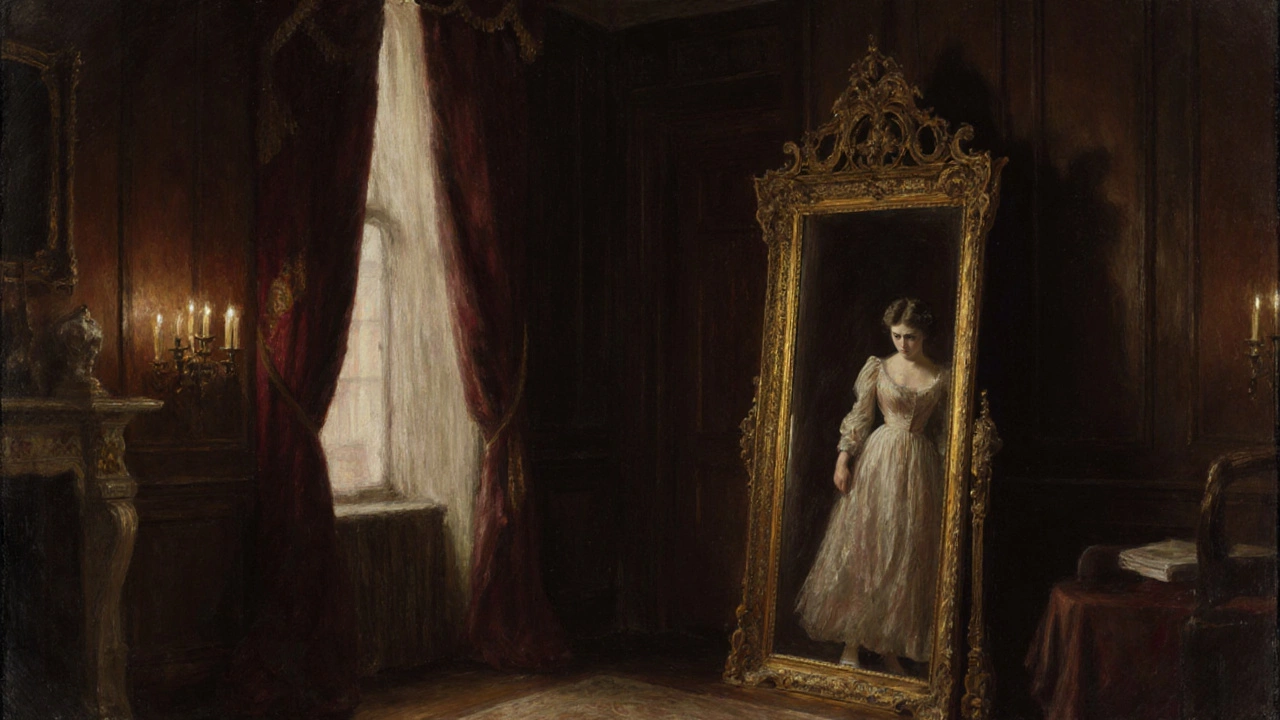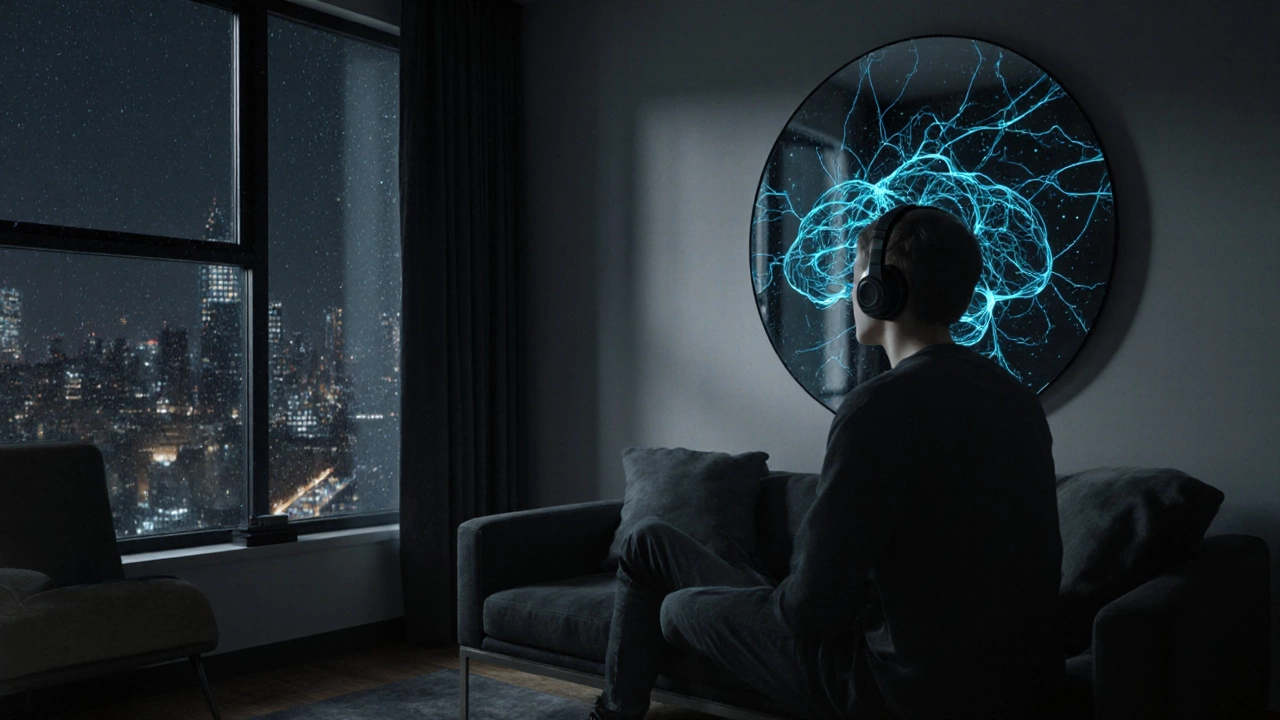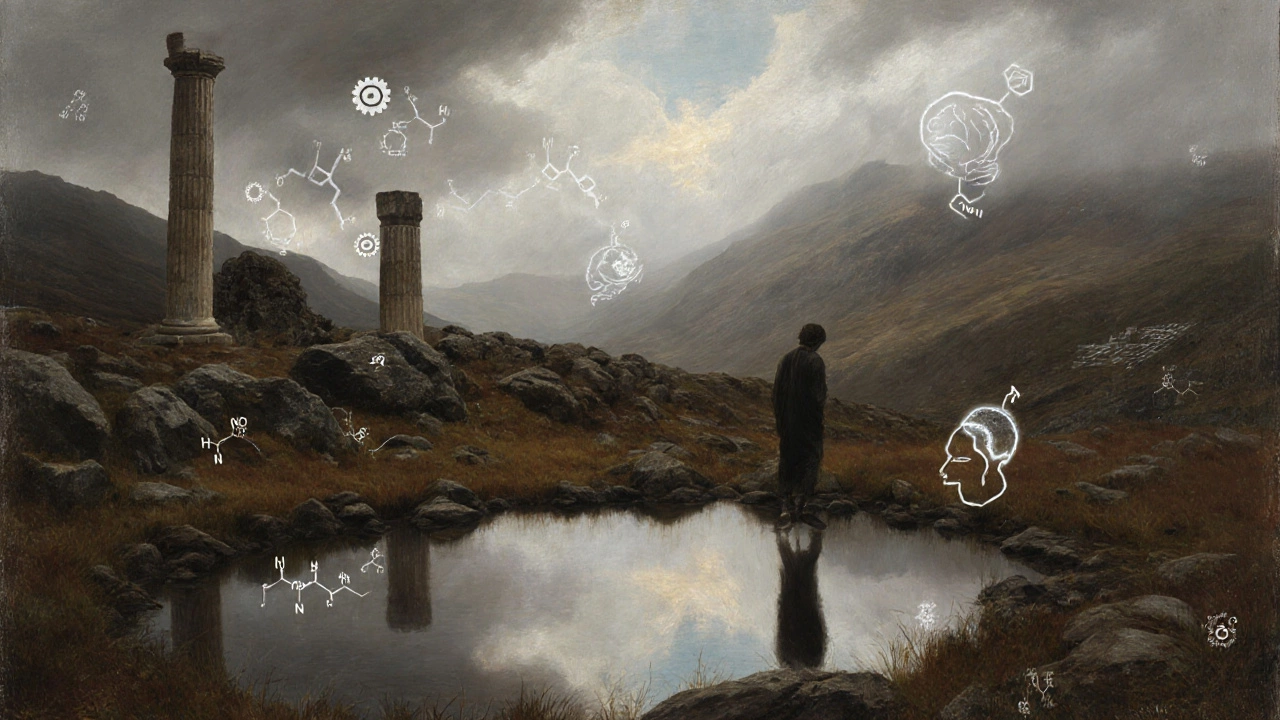Why Humans Fear Mirrors: Psychology, Folklore, and the Science Behind Eisoptrophobia

Mirror Fear Quiz
This interactive quiz explores the reasons behind mirror fear (eisoptrophobia), including evolutionary instincts, cultural beliefs, and psychological impacts.
Eisoptrophobia is a specific fear of mirrors and reflected images, often manifesting as intense anxiety, avoidance, or panic when confronted with a reflective surface. While the term sounds arcane, the experience feels very real for many, and it intertwines biology, culture, and personal history.
Evolutionary Roots of the Fear
Our ancestors survived by detecting predators quickly. Self‑recognition is a cognitive milestone that emerged around 4‑5 million years ago, when primates began to differentiate "me" from "other". The brain region called the fusiform gyrus lights up when we see ourselves, and a mis‑fire can trigger a primitive alarm response. The neurobiology of fear involves the amygdala, which reacts to sudden, ambiguous stimuli-like an unexpected face appearing in a glass pane.
In the wild, a reflective surface could conceal a hidden threat. A shimmering pool might hide a predator lurking just beneath. Over millennia, that hyper‑vigilance baked into our DNA, making sudden reflections a potential red flag.
Cultural and Folklore Amplifiers
Stories amplify instinct. Across continents, mirrors have been cast as portals to the supernatural. In European folklore, a mirror left uncovered at night invites wandering souls; in Japanese tradition, the "kagami" is a sacred object that can trap a spirit if mishandled. The myth of vampires refusing to cross their own reflection reinforced the idea that mirrors reveal a hidden, darker self.
Even modern horror movies weaponize this fear. Think of the iconic scene where a character sees a distorted face behind them-our brains automatically link the visual oddity to danger, thanks to those age‑old myths.
Psychological Mechanisms: The Shadow Self
Swiss psychiatrist Jungian Shadow theory suggests that mirrors force us to confront the parts of ourselves we hide-repressed emotions, unacknowledged traits, or past trauma. When the glass shows an unfiltered image, the unconscious mind can interpret it as exposure of these hidden facets, sparking anxiety.
Another key process is psychological projection. People sometimes project internal fears onto external objects; a cracked mirror becomes a metaphor for a broken self‑image. The act of looking can feel like an invitation for judgment, amplifying the stress response.

Optical Illusions and Perceptual Tricks
Mirrors are not perfect reflectors. Optical illusion effects-such as the "mirror‑maze" phenomenon-can distort depth perception, making rooms appear larger or smaller and causing disorientation. In low‑light conditions, the brain fills gaps with imagined shapes, sometimes birthing phantom faces.
These visual quirks can trigger a cascade: distortion → uncertainty → fear response. When the brain can’t reliably interpret the stimulus, it defaults to a safety mode, readying the body for fight or flight.
Mirrors vs. Other Reflective Surfaces
| Attribute | Mirror | Plain Glass | Still Water |
|---|---|---|---|
| Reflectivity | ~90% | ~4% | ~30% |
| Image Fidelity | High (minimal distortion) | Low (refractive distortion) | Variable (ripples, refraction) |
| Psychological Impact | Strong (often triggers self‑awareness) | Weak (mostly perceived as barrier) | Moderate (associated with depth, mystery) |
| Cultural Symbolism | Self‑reflection, truth, vanity | Transparency, openness | Purity, subconscious |
The table shows why mirrors uniquely provoke a fear response: they combine high reflectivity, crisp image fidelity, and deep cultural baggage. A pane of glass or a puddle lacks that concentrated symbolic weight.
Therapeutic Approaches to Overcome Mirror Fear
For those grappling with mirror phobia, evidence‑based methods exist. Exposure therapy gradually desensitizes the anxiety response by introducing the feared stimulus in a controlled manner. Starting with a small, dimly lit mirror and slowly increasing exposure helps rewire the amygdala’s alarm system.
Cognitive‑behavioral techniques also target the underlying beliefs: challenging the idea that a reflection reveals a “dangerous” self and replacing it with balanced thoughts. Mindfulness practices, such as focusing on the breath while looking at one’s reflection, can anchor the nervous system.
Related Concepts and Next Steps
Understanding fear of mirrors opens doors to broader topics. Mirror symbolism appears in art, literature, and religion-think of Narcissus, the “Mirror of the Soul” in Buddhist tradition, or the “looking glass” in cyber‑culture. Diving into these areas enriches the conversation about self‑perception.
Readers interested in the science of self‑awareness may explore articles on self‑recognition in infants, the role of the insula in body image, or the cultural history of reflective architecture. Each thread deepens the insight into why we sometimes run from our own reflection.

Frequently Asked Questions
What exactly is Eisoptrophobia?
Eisoptrophobia is the clinical term for a persistent, irrational fear of mirrors or reflective surfaces. It can cause avoidance, rapid heartbeat, sweating, or full‑blown panic attacks when a person encounters a mirror.
Why do some people feel uneasy looking at themselves?
The discomfort often stems from a mix of evolutionary alertness, cultural myths that attach supernatural meanings to mirrors, and personal experiences where a self‑image triggered negative emotions or trauma.
Is mirror fear common in children?
Yes, many children experience a brief stage of mirror aversion around ages 2‑3, often linked to the developmental milestone of self‑recognition. Most outgrow it, but a minority retain the fear into adulthood.
Can therapy really help someone with mirror phobia?
Clinical studies show that graded exposure combined with cognitive‑behavioral strategies reduces fear intensity in 70‑80% of cases. Consistency and a supportive therapist are key.
Are there any cultural practices that reduce fear of mirrors?
In some Asian traditions, covering mirrors during mourning is believed to protect the soul, which can provide a ritualistic sense of safety. Modern mindfulness exercises that treat the mirror as a neutral object also help reframe the experience.
How do mirrors differ from other reflective surfaces in triggering fear?
Mirrors offer a crisp, full‑body image and carry centuries of symbolic meaning-truth, vanity, souls-making them uniquely potent. Glass or water reflect less clearly and lack the same cultural weight, so they usually provoke a weaker emotional response.